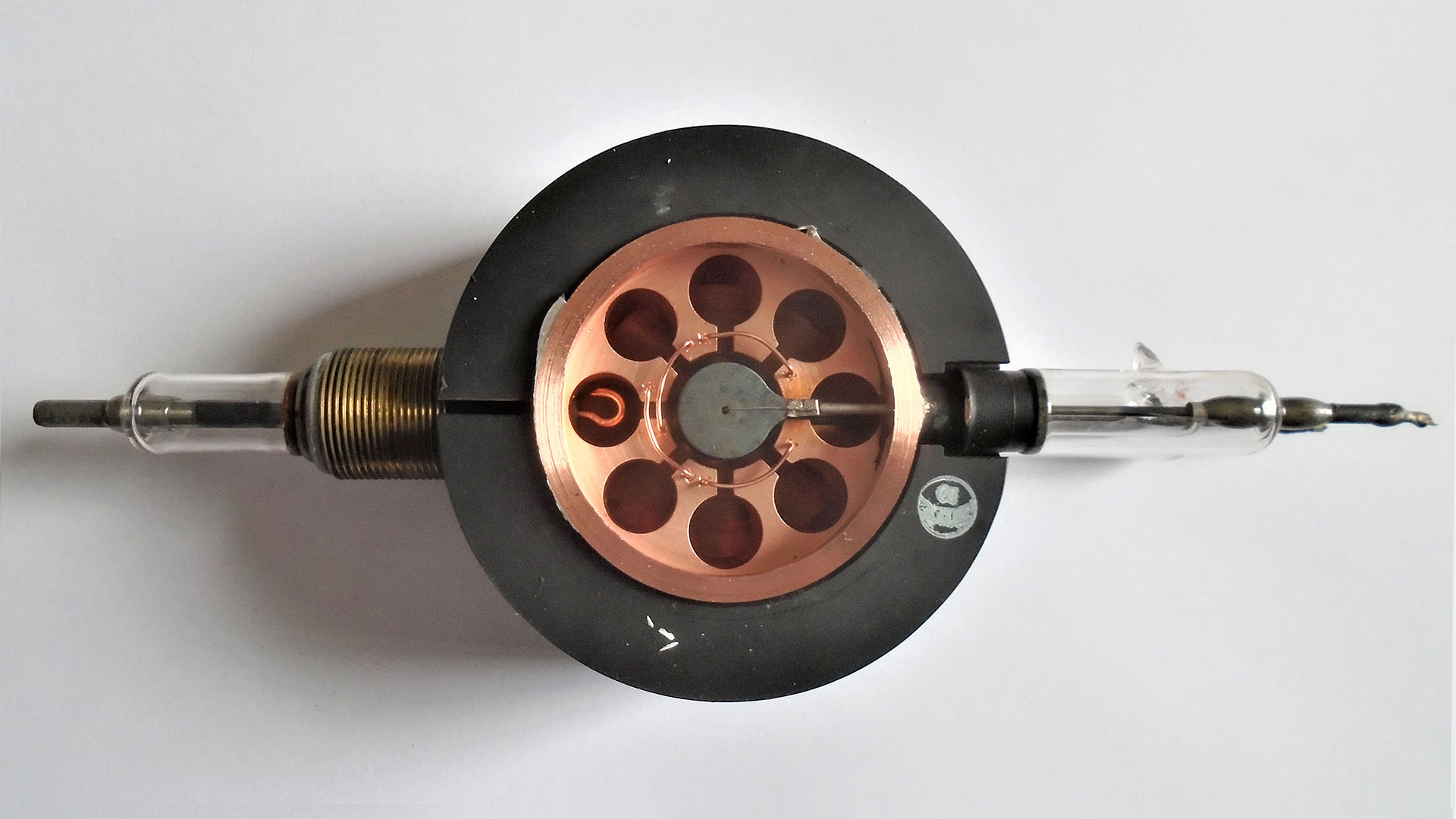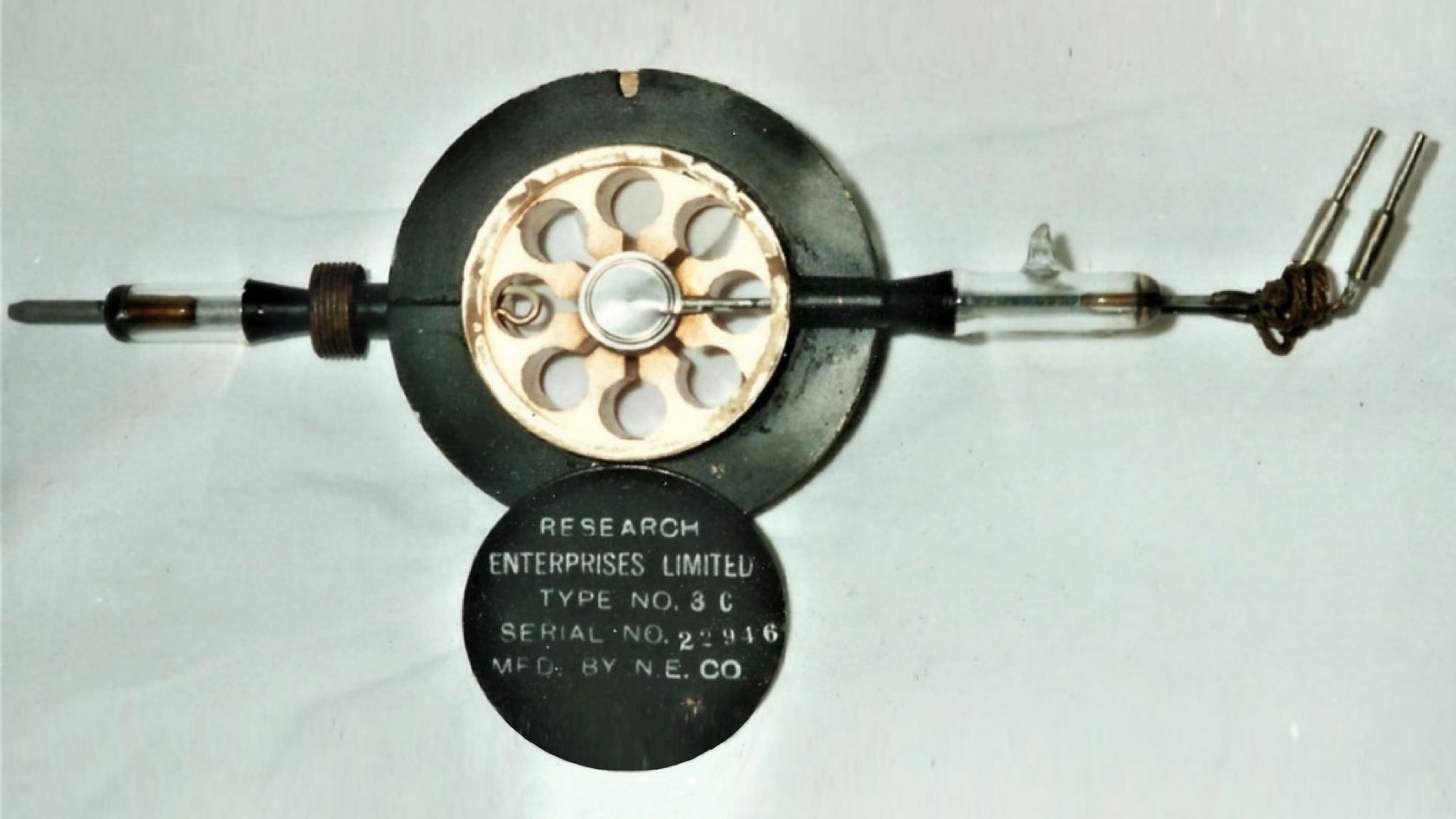80 Years of Cavity Magnetron
This year, 2020 marks the 80th anniversary of the development of the cavity magnetron, a small but immensely powerful and robust radio valve, at first used in wartime radars and today at the heart of every microwave oven.
Originally developed in 1940, at Birmingham University, by John Randall and Harry Boot, and production engineered by GEC in Wembley, Britain used the magnetron to build the world’s first high power compact radars for fitting into warships, aircraft, and vehicles. These radars helped to locate submarines in the wartime Battle of the Atlantic and to defeat the 1944/5 cruise missile assault by the German V-1 Flying Bombs.
The Americans, with whom the secret of the magnetron was shared in the 1940 British Technical Mission (the Tizard Mission), called it “the most valuable cargo to reach these shores”.
Once the magnetron was discovered to heat water and food, it came into almost every home as the core of the microwave oven; over a billion have been made. One key to its success is the permanent magnet which gives the magnetron its name. The first magnetrons employed electromagnets and so were suitable only in laboratories, not for military use. The contribution of precision permanent magnets came from the skill and expertise of foundries such as Darwin’s and Jessop’s in Sheffield, as the city had developed an expertise in radio loudspeaker magnets during the 1930s.
Sheffield’s foundries and the insights of its University Professor Willie Sucksmith, helped take the magnetron from the laboratory into aircraft, ships, vehicles and eventually almost every restaurant, cafe and domestic kitchen in the world.
A Sectioned Wartime Magnetron
Image of a sectioned wartime magnetron, showing the cavities whose dimensions determine its operating frequency; the permanent magnet is not shown but fits around the magnetron. This rare example was made in Canada following the 1940 Tizard Mission.
Article by Dr Phil Judkins – Chair of the Defence Electronics History Society
Further reading on the story of the cavity magnetron can be found on the IEEE Spectrum website
Are you a member of the Newcomen Society?
Now in its Centenary Year, the society has published over a 1000 papers in The Journal – an invaluable archive of original research material published twice a year, covering all aspects of engineering from ancient times to the present, plus available to browse and download in our FREE TO MEMBERS Archive.
Full Membership includes:
- Journal for the History of Engineering & Technology (two issues, one volume per year)
- Printed and/or PDF versions of LINKS, Newcomens’ newsletter (published 4 times a year)
- Free access and download facilities to the Society’s Archive of past papers back to 1920 (The Journal)
- Membership of local branches and subject groups
- Access to the website’s Member Area offering access to research sources & access to other members (subject to privacy permissions)
- Attendance at summer meetings, conferences, lectures and study days.



[…] El primer magnetrón de cavidades resonantes fabricado en Gran Bretaña por General Electric Company (E-1189) […]